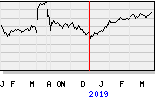
- Findings underscore high rates of stress and burnout among radiology staff worldwide
Amsterdam, the Netherlands – Royal Philips (NYSE: PHG, AEX: PHIA), a global leader in health technology, today announced the key findings of the Philips Radiology Staff in Focus study. This new research sheds light on the pain points that exist specifically for radiology technologists and imaging directors working in the U.S., France, Germany and the U.K., and identifies areas where technology and informatics can deliver meaningful improvements to workflow, imaging results, and patient and staff satisfaction.
Across the four countries surveyed, radiology technologists and imaging directors expressed, on average, only moderate satisfaction with their jobs. With pressure on imaging departments mounting amid rising patient volumes and a global shortage of qualified staff, it is critical that health systems consider how to maintain or improve staff satisfaction to help minimize attrition.
As we develop imaging solutions that advance radiology through improved workflow and efficiency, data integration and AI, it’s important that we support radiology staff to provide the best to care to each patient.
Kees Wesdorp
General Manager, Diagnostic Imaging at Philips.
“The subject of burnout is a major topic of discussion in radiology, but there has not been sufficient focus on understanding the specific challenges faced by radiology technologists and imaging directors,” said Kees Wesdorp, General Manager, Diagnostic Imaging at Philips. “These critical stakeholders have a direct responsibility for image acquisition and quality, operations, and patient care. As we develop imaging solutions that advance radiology through improved workflow and efficiency, data integration and AI, it’s important that we support radiology staff to provide the best to care to each patient.”
Empowering the people behind the image
While radiology technologists are quite clear about causes of inefficiency in their departments, many do not feel empowered to effect change. On average, 43% felt either “not at all empowered” or only “somewhat empowered” to effect change in their department.
Imaging works as a system, and it can only deliver peak performance when all its stakeholders are empowered to do their jobs effectively. Imaging staff are on the front lines of patient care and it is essential to arm them with the right information to enable a workflow that gives them more time with patients. Focusing innovation efforts in these areas on the needs of imaging staff has great potential to improve workflow and throughput, enhance patient satisfaction, and decrease staff stress and burnout.
Efficiency and automation needed to get the right image the first time
When asked what the biggest barrier was for getting the image right the first time, technologists cited lack of patient preparation and patient information as the top contributor (37%). Technology factors (equipment quality and capability, mastery of the technology, and ease-of-use of imaging equipment) were second highest (36%). Workflow and colleague support ranked third (27%).
While staff consider many factors to be important to their job satisfaction, those they value most involve their ability to work as a team to deliver highly competent, patient-centered care. However, various demands for their time mean they cannot focus on these areas as much as they would like. The report offers insights from these key stakeholders about their top challenges, including sources of stress, technology confidence, and communication and information gaps, and how we can begin to address them more effectively.
High rates of stress and burnout among radiology technologists
According to the study, stress among radiology technologists is alarmingly high, with 40 to 97% of techs reporting moderate to severe levels of job stress. As a corollary, technologists in every geography similarly reported significant burnout, with over one-third of respondents reporting moderate to high levels of burnout. When combined with high burnout levels for radiologists [1], these numbers demonstrate a systemic problem across imaging. Across every geography, workload was cited as by far the greatest source of stress and burnout for imaging staff.
About the study
The Philips Radiology Staff in Focus report is based on a double-blind survey of 254 radiology technologists and imaging directors in the U.S., France, Germany and the U.K., and was conducted between May and June 2019. To download the report or to learn more about Philips’ solutions to support a precise diagnosis, please visit: www.philips.com/radiology.
Philips will demonstrate its integrated portfolio of imaging solutions at the 2019 Radiological Society of North America (RSNA) Annual Meeting in booth #6730. For more information about Philips’ presence at RSNA, visit www.philips.com/RSNA, and follow @PhilipsLiveFrom for #RSNA19 live updates.
[1] Medscape Radiologist Lifestyle, Happiness & Burnout Report 2019
